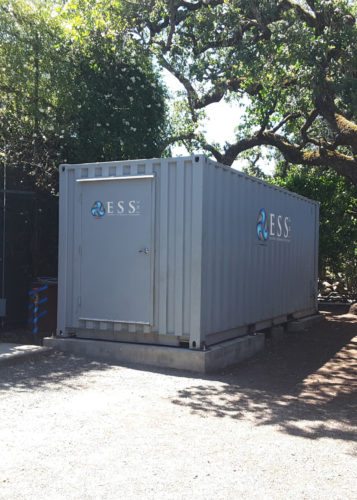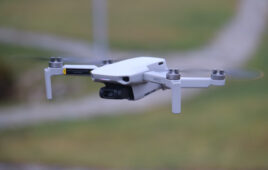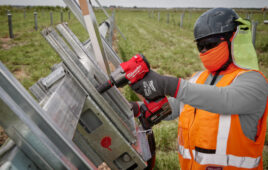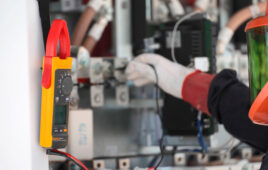Stone Edge Farm Winery sits on 16-acres in Sonoma, California. About 20 years ago, the farm was established by entrepreneur, environmentalist and winemaker Mac McQuown, along with his wife Leslie who contributed her design knowledge to the farm. McQuown also enlisted his previous associate Jeff Baker for his experience in winemaking. Along with grapevines, Stone Edge Farm maintains heirloom vegetables, olive groves, fruit trees, ornamental plants, herbs, chickens and beehives. The McQuowns are also committed to reducing the farm’s carbon footprint through renewable energy.
From the beginning, the McQuowns’ vision for the farm was to “demonstrate what is possible.” They saw their concern for climate change as an opportunity to put this vision into action. In 2004, they set a goal to reduce their carbon emissions by 50% in three years. To help meet this goal, the farm applied advanced conservation technologies. They began using an irrigation system with a smartphone that remotely controls 150 irrigation valves and 25,000 emitters, which helped reduce their water usage by 50%. PV arrays, a fuel cell and a microturbine became their main sources of electrical power. As a result of these conservation efforts, the farm was able to meet its three-year target in just one year.

Following this success, the farm set a new goal of eventually reaching zero emissions and below.
It is a collaboration of vendors including ESS, Enphase, Aquion, DC Systems, Tesla and more. The microgrid is unique because of its ability to simultaneously draw from the regional power grid and supply energy back to the grid. It contains more than 300 solar panels, a natural gas micro turbine, an alkaline electrolyzer, hydrogen storage and a vehicle refueling station, a PEM fuel cell, and more than 300 kW of batteries.
During hours of sunlight, solar PV provides energy for many of the buildings on the site, and during dark hours, these batteries provide energy for building loads. The system consists of fourteen 25-kWh Aquion M-Line Battery Modules that provide approximately 350 kWh of storage capacity. These are connected to a 32 kW solar array with Ideal power’s 30 kW multi-port power conversion system. The architecture of the system allows direct DC-level connection of solar PV and energy storage without the complexities of older, AC-coupled systems.
In addition, Stone Edge Farm Winery recently began operating a customized all-iron flow battery (IFB) system manufactured by ESS Inc. to demonstrate how energy storage can enable net zero, with intermittent renewables, in an advanced microgrid application.
This new IFB system is uniquely designed for projects with longer-duration energy applications, such as time shifting stored solar to the evening hours to power irrigation pumps. The IFB offers long-duration capacity of 6 to 8 hours, a low cost per kWH and virtually unlimited deep cycles. It also features an environmentally friendly electrolyte and a 20-plus year system life. The iron, salt and water electrolyte was hydrated on-site as part of a simple, two day installation and commissioning.
ESS hopes that in the near future, long-duration storage will enable more effective use of solar as a baseload generation source by smoothing the intermittencies and shifting substantial amounts of PV energy for later use during the non-solar hours of the day.
Other businesses that may be constrained by low net-energy metering caps may also benefit from long-duration IFBs, where the storage can manage demand charges and shift bulk solar energy to a different part of the day to minimize energy costs. With this in mind, businesses can put in more solar to cover a bigger percentage of their annual energy consumption with low-cost solar.
Stone Edge Farm presented an ideal location to debut this technology because of its focus on demonstrating what the future of storage could look like. ESS can showcase the many features of the IFB, including time shifting bulk energy or delivering short power bursts for smoothing solar. Additionally, Stone Edge Farm was already working to integrate some of the leading microgrid technologies, including the energy management system, which made it possible for the IFB system to interface with and be controlled by a leading grid-operable energy control system.
“ESS understands that each of our customer’s projects are different so we were pleased to develop a customized solution for this winery,” said Craig Evans, CEO of ESS.





Tell Us What You Think!